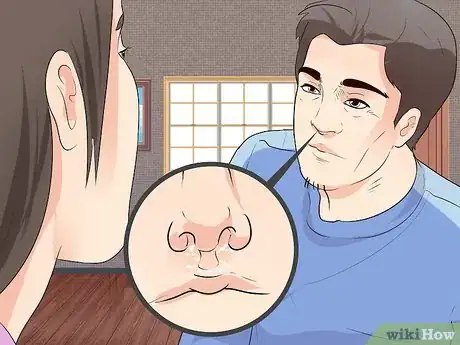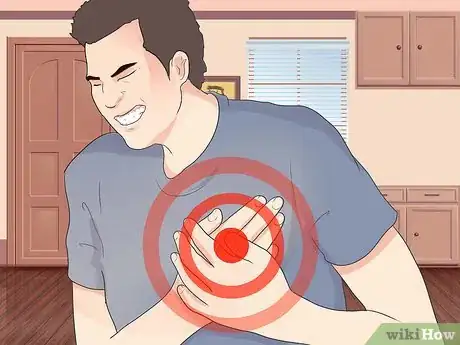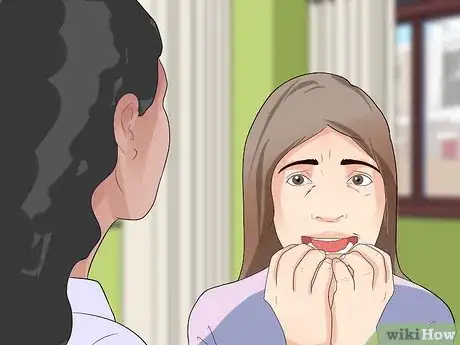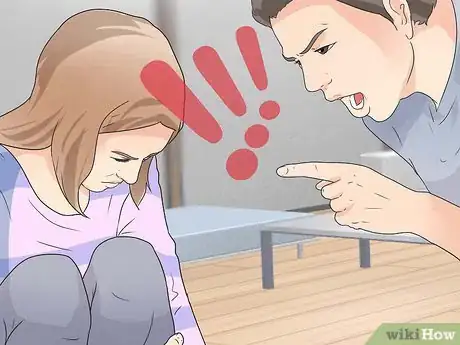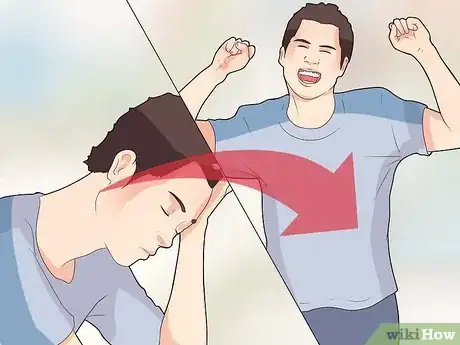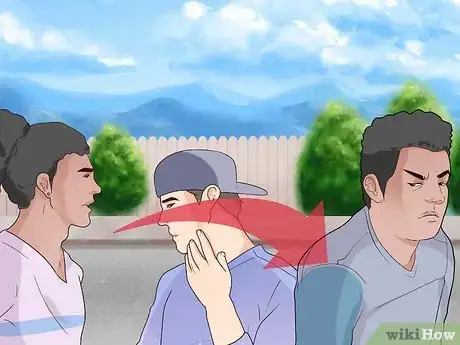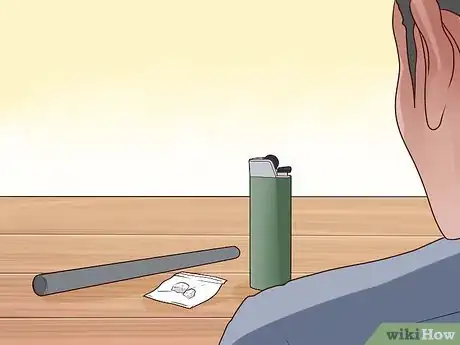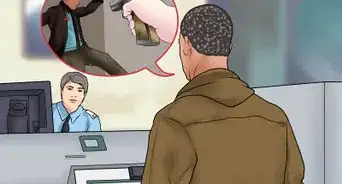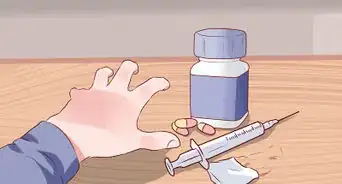This article was medically reviewed by Shari Forschen, NP, MA. Shari Forschen is a Registered Nurse at Sanford Health in North Dakota. Shari has worked in healthcare since 1996 and her expertise lies in acute care bedside nursing on a medical oncology floor. She received her degree from Medcenter one College of Nursing in 2003 and her Family Nurse Practitioner Masters from the University of North Dakota in 2014. Shari is a member of the American Nurses Association.
There are 10 references cited in this article, which can be found at the bottom of the page.
wikiHow marks an article as reader-approved once it receives enough positive feedback. In this case, 82% of readers who voted found the article helpful, earning it our reader-approved status.
This article has been viewed 516,947 times.
Cocaine is a highly addictive drug with widespread use around the world. Some experts estimate that in the United States alone, almost 25 million people will have tried cocaine at least once in their lifetime.[1] Cocaine is typically snorted through the nose but can be injected or smoked, and each method of administration carries its own risks of adverse effects.[2] Learning the signs and symptoms of cocaine use can help you determine whether a friend or loved one is using cocaine, and help you determine how to intervene.
Steps
Recognizing Physical Indications of Cocaine Use
-
1
-
2Look for signs of nasal stress. Because many users administer cocaine by snorting it through the nose, one of the telltale signs of cocaine use is nasal stress. Look for signs of:Advertisement
-
3Check for rapid pulse. Because cocaine is a stimulant, one of the common physical symptoms of cocaine use is a rapid heartbeat. In some cases, this may lead to cardiac arrhythmias (irregular heartbeat), hypertension, and cardiac death.[12]
- A normal, healthy heart rate for most adults is between 60 and 100 beats per minute.[13]
- Note that heart rate can be affected by other factors not associated with drug use, including physical activity, air temperature, body position, emotional states, and even certain legal medications.[14] For this reason, heart rate alone should not necessarily be considered a definitive sign of drug use.
-
4Recognize the signs of crack cocaine use. Another common method of administering cocaine is by smoking the drug, typically in the form of a solid "rock," called crack cocaine. Crack is formed by mixing powdered cocaine with water and baking soda.[15]
- Signs of crack use include burned fingers or lips from lighting and smoking through a specialized device commonly called a crack pipe.[16]
-
5Identify the signs of intravenous drug use. Some users inject cocaine intravenously, using a syringe. This is done to experience immediate effects of the drug but comes with its own set of risks, including endocarditis (heart inflammation), cardiovascular disease, abscesses/infections, and an increased risk of overdose. Intravenous drug use also greatly increases the chances of transmitting a blood-borne disease like hepatitis and HIV.[17]
- Signs of intravenous drug use include puncture marks (called "track marks"), most commonly seen in the arm, and possible skin infections or allergic reactions caused by additives mixed with cocaine.[18]
-
6Be aware of oral ingestion. One method of administering cocaine is by orally swallowing the drug. This produces fewer external signs of drug use than smoking, snorting, or injecting the drug, but it has been known to cause severe gangrene in the bowels and gastrointestinal tract due to reduced blood flow and GI sensitivity to the drug.[19] In cases of oral ingestion, the most visible signs will probably be the symptoms typical of stimulant use, including:
Looking for Behavioral Symptoms of Cocaine Use
-
1
-
2
-
3Notice other behavioral changes. Someone who consistently uses cocaine may end up spending large amounts of time and energy acquiring cocaine.[34] Users of cocaine may also engage in:
-
4Look for dramatic mood swings. Because cocaine is a stimulant, it can cause sudden changes in mood. This may mean irritability, but it could also cause sudden bursts of euphoria or a sense of carelessness, or a shift from one extreme to the other.[37]
-
5Notice social withdrawal. A common behavioral characteristic of people who use drugs is withdrawing from social relationships, either to be alone or to be with others who use drugs.[38]
- Though socially withdrawing from a group of friends may be caused by other factors, such as anxiety or depression, it may also be a sign of drug use.
-
6Note a loss of pleasure. Many users of all kinds of drugs experience a loss of pleasure in activities or interests that had previously been enjoyable, but this is particularly problematic with cocaine use.[39] That's because cocaine use harms the circuits in the human brain that are responsible for a sense of pleasure.[40]
- Look for signs of depression and a seeming lack of pleasure in day-to-day activities as a symptom of long-term cocaine use.
Spotting Evidence of Drug Use
-
1Look for straws and tubes. Depending on the method of administration, there may be a wide range of cocaine-related paraphernalia. Because snorting cocaine is the most common method of ingestion, common paraphernalia items include:
- hollowed-out pens
- straws
- rolled up money or money that appears to have been rolled up
- razor blades, credit cards, or ID cards, often with powdery residue on the edges
-
2
-
3Recognize evidence of intravenous drug use. Though less frequent than snorting or smoking the drug, intravenous injection of cocaine is still a common method of administration. Look for:
- syringes
- tourniquets, including belts and shoelaces
- spoons, which may have burn marks on the bottom
- lighters
Warnings
- None of these signs, by themselves, should be considered as hard evidence. A person may be engaging in suspicious behaviors, but this does not mean that they are using drugs.⧼thumbs_response⧽
- Cocaine use can lead to addiction, aortic dissection (torn arteries), high blood pressure, stroke, heart attack, or death.[43]⧼thumbs_response⧽
References
- ↑ http://www.medicinenet.com/cocaine_and_crack_abuse/article.htm
- ↑ http://www.medicinenet.com/cocaine_and_crack_abuse/article.htm
- ↑ http://www.mayoclinic.org/diseases-conditions/drug-addiction/basics/symptoms/con-20020970
- ↑ http://www.addictions.com/crack-addiction/recognizing-top-5-crack-addiction-symptoms/
- ↑ http://www.addictions.com/crack-addiction/recognizing-top-5-crack-addiction-symptoms/
- ↑ http://www.narconon.org/drug-abuse/signs-symptoms-cocaine-use.html
- ↑ http://www.narconon.org/drug-abuse/signs-symptoms-cocaine-use.html
- ↑ http://www.narconon.org/drug-abuse/signs-symptoms-cocaine-use.html
- ↑ http://www.medicinenet.com/cocaine_and_crack_abuse/article.htm
- ↑ http://www.medicinenet.com/cocaine_and_crack_abuse/article.htm
- ↑ http://www.narconon.org/drug-abuse/signs-symptoms-cocaine-use.html
- ↑ http://www.highlandridgehospital.com/addiction/cocaine/effects-signs-symptoms
- ↑ http://www.mayoclinic.org/healthy-lifestyle/fitness/expert-answers/heart-rate/faq-20057979
- ↑ http://www.mayoclinic.org/healthy-lifestyle/fitness/expert-answers/heart-rate/faq-20057979
- ↑ http://www.ncbi.nlm.nih.gov/pmc/articles/PMC181074/
- ↑ http://www.narconon.org/drug-abuse/signs-symptoms-cocaine-use.html
- ↑ http://www.semel.ucla.edu/dual-diagnosis-program/News_and_Resources/Potential_Complications_Of_IV_Drug_Use
- ↑ http://www.medicinenet.com/cocaine_and_crack_abuse/article.htm
- ↑ http://www.medicinenet.com/cocaine_and_crack_abuse/article.htm
- ↑ http://www.pdrhealth.com/diseases/drug-abuse/symptoms
- ↑ http://www.narconon.org/drug-abuse/signs-symptoms-cocaine-use.html
- ↑ http://www.medicinenet.com/cocaine_and_crack_abuse/article.htm
- ↑ http://www.medicinenet.com/cocaine_and_crack_abuse/article.htm
- ↑ http://www.narconon.org/drug-abuse/signs-symptoms-cocaine-use.html
- ↑ http://www.narconon.org/drug-abuse/signs-symptoms-cocaine-use.html
- ↑ http://www.highlandridgehospital.com/addiction/cocaine/effects-signs-symptoms
- ↑ http://www.highlandridgehospital.com/addiction/cocaine/effects-signs-symptoms
- ↑ http://www.highlandridgehospital.com/addiction/cocaine/effects-signs-symptoms
- ↑ http://www.highlandridgehospital.com/addiction/cocaine/effects-signs-symptoms
- ↑ http://www.twelveoaksrecovery.com/cocaine/withdrawals-effects/
- ↑ http://www.medicinenet.com/cocaine_and_crack_abuse/article.htm
- ↑ http://www.twelveoaksrecovery.com/cocaine/withdrawals-effects/
- ↑ http://www.medicinenet.com/cocaine_and_crack_abuse/article.htm
- ↑ http://www.medicinenet.com/cocaine_and_crack_abuse/article.htm
- ↑ http://www.medicinenet.com/cocaine_and_crack_abuse/article.htm
- ↑ http://www.narconon.org/drug-abuse/signs-symptoms-cocaine-use.html
- ↑ http://www.twelveoaksrecovery.com/cocaine/withdrawals-effects/
- ↑ http://www.twelveoaksrecovery.com/cocaine/withdrawals-effects/
- ↑ http://www.twelveoaksrecovery.com/cocaine/withdrawals-effects/
- ↑ http://www.twelveoaksrecovery.com/cocaine/withdrawals-effects/
- ↑ http://www.narconon.org/drug-abuse/signs-symptoms-cocaine-use.html
- ↑ http://www.narconon.org/drug-abuse/signs-symptoms-cocaine-use.html
- ↑ http://www.medicinenet.com/cocaine_and_crack_abuse/article.htm
About This Article
If you think someone is abusing cocaine, look for physical symptoms like dilated pupils and nasal issues. Since many cocaine users snort it, someone who is abusing cocaine will likely suffer from nosebleeds, a decreased sense of smell, and damaged nostrils. Also check for puncture marks on the person’s arms, as some users inject cocaine intravenously with a syringe. In addition to physical symptoms, watch for behavioral ones, like overly-energetic behavior and uncharacteristic risk-taking. People who abuse cocaine might also leave evidence behind after using, so keep an eye out for hollowed-out pens, straws, and razor blades with powdery residue on the edges. For more help from our co-author, like how to look for signs of crack cocaine use, scroll down.

